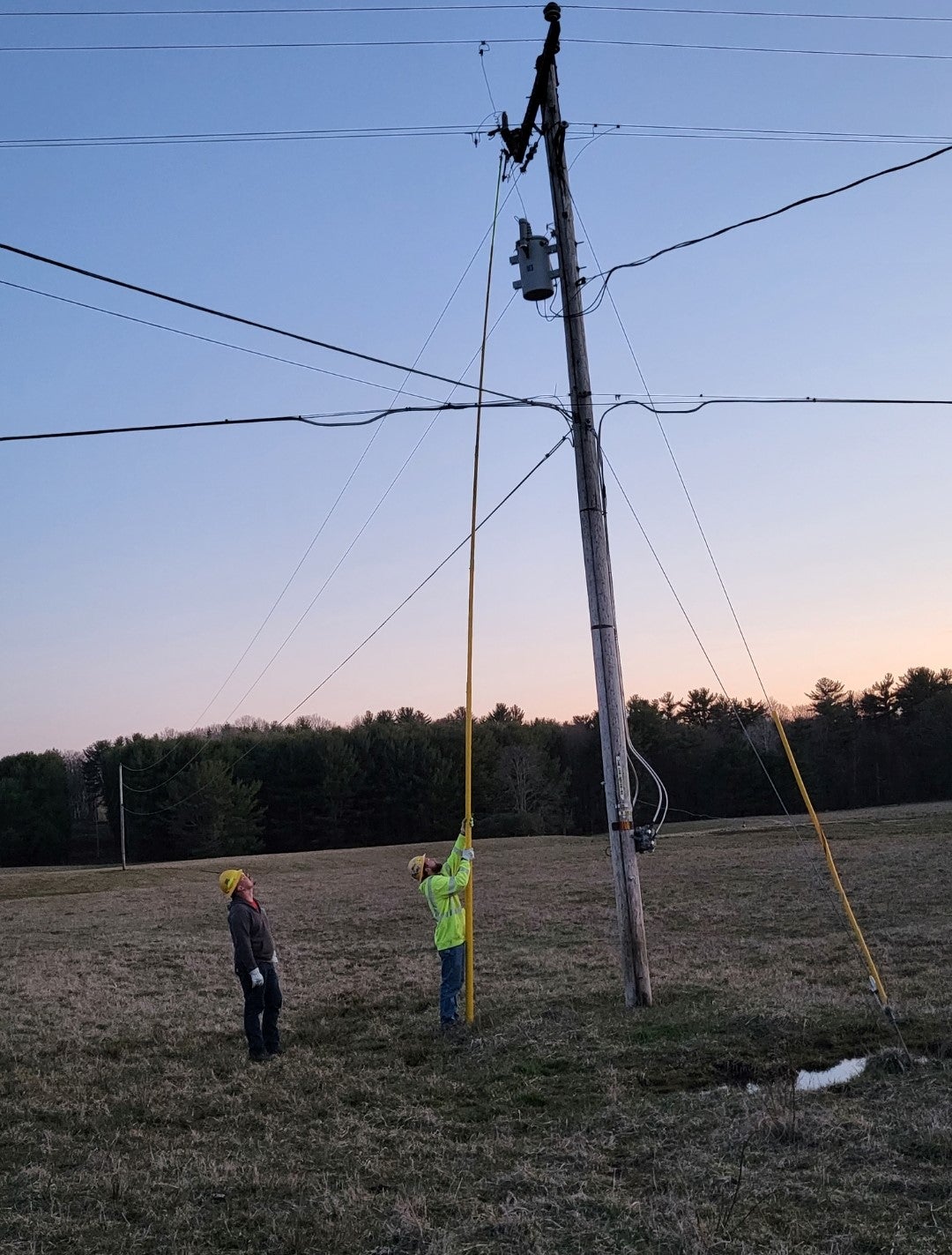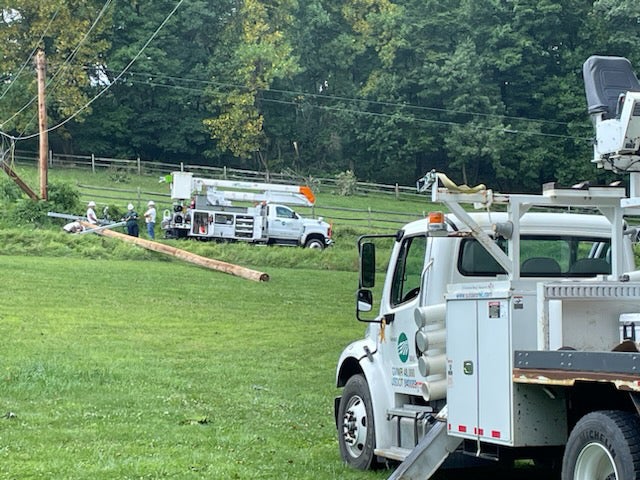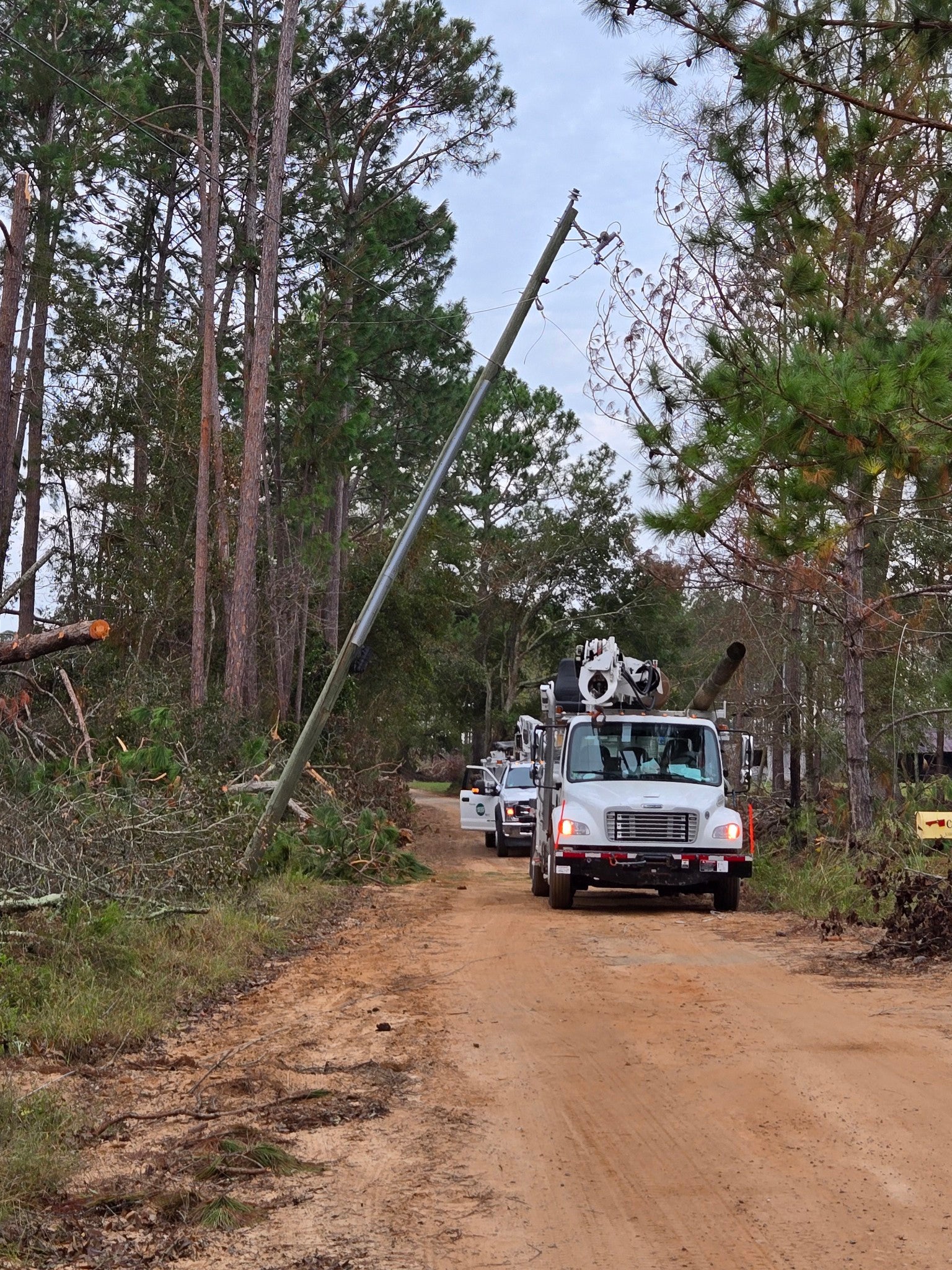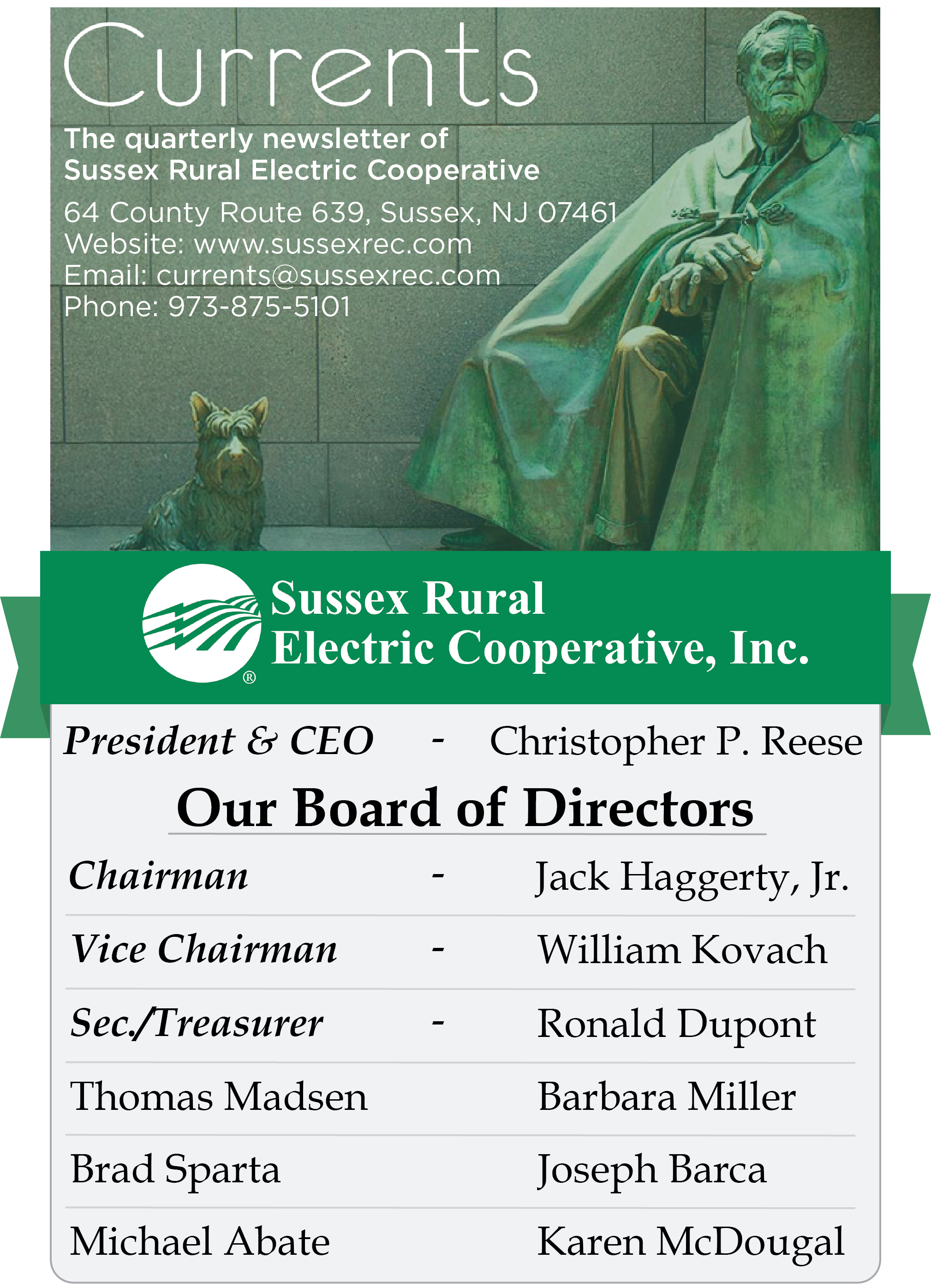To view the full print/pdf version of 2025's Q1 Issue of Currents, click here
For previous issues of Currents, visit our Currents Library
The Other Side of Mutual Aid
By: Claudia Raffay, Director of Marketing & Member Services
Email: craffay@sussexrec.com
In our last issue of Currents, we looked at the human side of mutual aid. We shared the story of seven of our linemen who joined the restoration efforts in Georgia to help communities devastated by Hurricane Helene. As an addition to that story, I am pleased to report that each of these linemen, through our Employee Directed Giving program, have elected to donate to the two churches that treated them so kindly during their time there. Each church will receive a donation of $1,000.00 through this program.
In this issue, we will explore the other side of mutual aid. How does it work? How do co-ops decide when it’s needed? During prolonged outages, members sometimes ask if we will call crews in from other places. While mutual aid crews have provided critical help after some major storms, every situation is different. Several factors play a part in a co-op’s decision to ask for mutual aid, chief among them being the cost.
What is Mutual Aid?
Mutual aid is a collaborative approach to emergency planning. The mutual aid model allows electric co-ops to help each other out during times of need. The system permits co-ops to “borrow” restoration workers from other co-ops to temporarily increase their workforce and their ability to respond to a major outage.
Mutual aid has been a part of our DNA since electric co-ops were first formed. The concept originated with initial rural electrification efforts in the 1930s. From the very beginning, electric co-ops shared expertise and relied on each other to assist in times of need.
Because the national network of transmission and distribution infrastructure owned by electric cooperatives has been built to federal standards, line crews from any of the U.S.’s nearly 900 electric co-ops can arrive on the scene ready to provide emergency support and secure in their knowledge of the system’s engineering. Co-ops across the country also keep signed agreements on file which standardize the process and save time that would otherwise be spent negotiating the specifics.
Sussex REC has been on both sides of mutual aid. Our crews have responded to recent major outages in neighboring Pennsylvania and, as shown in our last article, in Georgia. We even sent linemen to help with repairs in Louisiana following Hurricane Katrina. On the flip side, we’ve called for help through this system many times, including as recently as the summer of 2024, when two storms blew through our territory with incredible speed and caused widespread outages. The cost of restoration for those two summer storms was over $500,000, including mutual aid costs.
The Logistics of Mutual Aid
 Mutual aid ultimately benefits co-ops’ consumer-members by increasing and accelerating their co-op’s ability to restore power during large outages. The additional manpower provides a critical safety net during times of crisis, especially for small co-ops. This can reduce restoration time by multiple days, but that benefit must be weighed against the logistical and cost challenges that come with calling for help.
Mutual aid ultimately benefits co-ops’ consumer-members by increasing and accelerating their co-op’s ability to restore power during large outages. The additional manpower provides a critical safety net during times of crisis, especially for small co-ops. This can reduce restoration time by multiple days, but that benefit must be weighed against the logistical and cost challenges that come with calling for help.
Disaster response and mutual aid is managed by electric co-ops, as well as co-ops’ statewide organizations. Statewide organizations, like our Pennsylvania Rural Electric Association, assist with coordination between states. These efforts require effective logistics management and experts who fully understand resource allocation. A variety of equipment may be needed to complete repairs for major outages, including bucket trucks and other specialized vehicles, utility poles, transformers, and wires. Skilled lineworkers, tree trimmers, damage assessors, and other key personnel are also often shared among co-ops. These experts provide critical skills and manpower to speed up the restoration process.
 As with any storm, our goal is to restore power safely and efficiently. Large storms that may make mutual aid necessary are also very expensive, so the co-op must weigh all of its options to best control costs. For example, we knew ahead of Hurricane Sandy that damage would be extensive enough to require mutual aid. We called on crews from as far as South Carolina and Florida, who were dispatched after the storm passed through their own communities and it was determined their co-ops could afford to spare the manpower.
As with any storm, our goal is to restore power safely and efficiently. Large storms that may make mutual aid necessary are also very expensive, so the co-op must weigh all of its options to best control costs. For example, we knew ahead of Hurricane Sandy that damage would be extensive enough to require mutual aid. We called on crews from as far as South Carolina and Florida, who were dispatched after the storm passed through their own communities and it was determined their co-ops could afford to spare the manpower.
Sometimes, it is not practical or possible to call for mutual aid. Large storms like hurricanes or nor’easters are likely to affect nearby co-ops, limiting our options and making it difficult to determine in advance who we can call for help. A good example is February’s ice storm, which worked its way east across most of the Midwest.
The scale of that storm meant no mutual aid crews were available for us. It even increased hold times for our after-hours call center, which provides similar services for other electric co-ops throughout the U.S.

If we call in crews, we are incurring costs to cover gas, use of trucks and equipment, and wages for the visiting crews. We are also responsible for covering their hotels and meal expenses while they are working for us. The costs incurred are tracked by the crews’ home cooperative and a bill is sent to the co-op receiving the help.
In the case of the storms in Georgia, work provided by our linemen and their accommodations were paid for by SREC, also paying their salary and overtime pay. SREC had no way of knowing how long it would take for the cooperatives in Georgia to reimburse these costs and the maintenance of our equipment. Luckily, the Georgia cooperatives were able to tap into FEMA aid and emergency lines of credit from cooperative lenders to cover the massive effort of visiting linemen and reimburse us in a timely manner.
A Cooperative Effort
Mutual aid continues to be a vital part of how electric co-ops operate and serve their members. By sharing resources, co-ops can significantly enhance their response capabilities. It helps make it possible for small, locally focused businesses like co-ops to effectively manage large-scale crises that can come from devastating storms.
Electric co-ops operate according to Seven Cooperative Principles, and principles six and seven, Cooperation Among Cooperatives and Concern for Community, are directly connected to the mutual aid model. Mutual aid is essentially about neighbors helping neighbors, even when those neighbors are fellow co-ops located hundreds of miles away.
Mutual aid is perhaps the best example of the difference that Cooperation Among Cooperatives makes. It ensures that members receive reliable electricity and the peace of mind that comes with knowing you are part of a larger network that takes care of each other, even in the face of major challenges.



